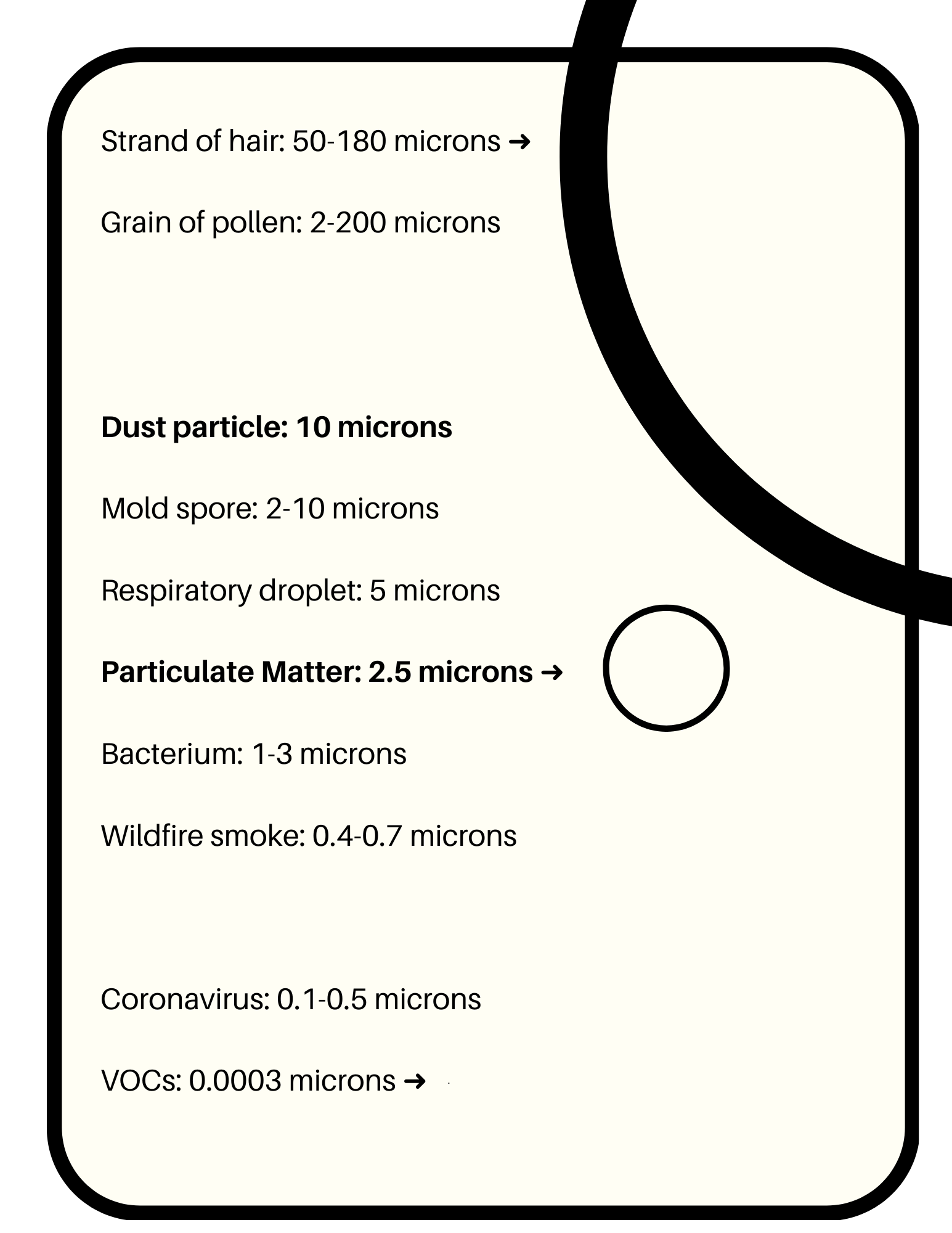Shop by Room Whole Home About ➜ Learn ➜ Particulate Matter
Particulate Matter (PM)
Click bolded statements for links to research.
What is Particulate Matter?
A fancy word for particles, Particulate Matter in your home comes from dust mite fragments, mold spores, and sources of combustion— like cooking, or using a toaster. If you live in a part of the world with wildfires, the smoke that comes into your home is also Particulate Matter.
Why is Indoor Particulate Matter bad?
These particles pollute your Indoor Air Quality quickly, and if they’re not cleared out of the home, they can irritate the lungs or combine with other harmful pollutants.
Some are so small, they can pass through lung tissue directly into the bloodstream, causing other problems throughout the body.
What is the difference between PM 2.5 and PM 10?
This just refers to how big the particles are, because the different sizes cause different problems.
Pollens, molds, dust, and dust mite fragments are particles that are below 10 microns in size, and their main effect is irritation of the throat and lungs. They can exacerbate asthma, and make it harder for the lungs to clear out viruses.
The particles smaller than 2.5 microns (PM 2.5) are more concerning, as these are the ones that can pass through your lungs and directly into your blood stream. Things like wildfire smoke, and the particles and chemicals released from cooking fall in this category.
Is indoor air really more polluted than outdoor air?
Yes. While pollution research in the past has tended to focus on outdoor air pollution, we now know that on average, home air is 2-5 times more polluted than outside air. This is a combination of PM and VOCs.
We know that PM can cause coughing, wheezing, and exacerbations of asthma, and reduced ability to remove bacteria and viruses from the lungs. Amazingly, it can also increase the risk of heart attack and worsening of heart failure, and increase ER visits, hospital admissions, and premature deaths. PM 2.5 is becoming increasingly linked with dementia and Alzheimer’s Disease.
How can I get PM 2.5 out of my home?
Open your windows daily, as long as outdoor levels are low (check your phone’s weather app). Use the exhaust fan every time you cook. Use an air purifier with a true HEPA filter and good third party testing whenever you’re cooking, at home, and at a minimum, in your bedroom at night.






